How To Decode Your Cat’s Tail: A Masterclass
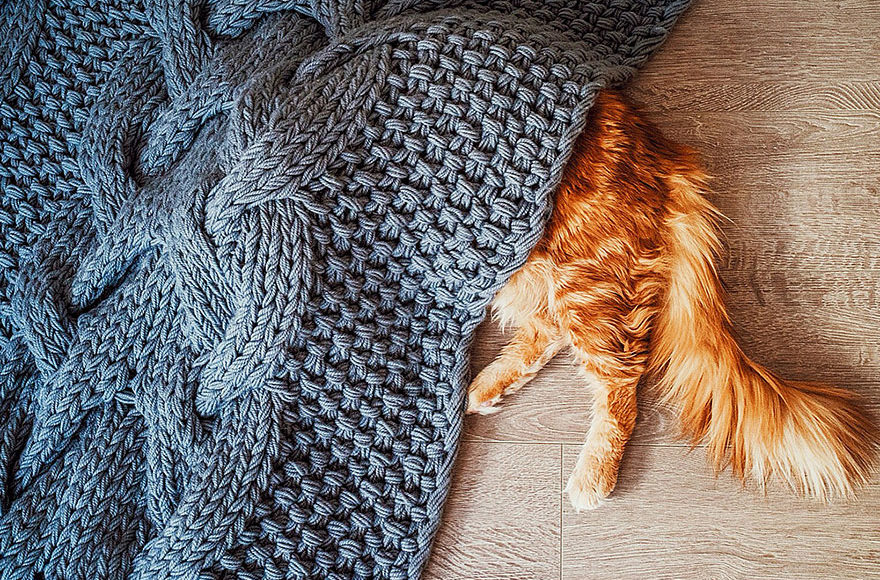
“Why the hell would a cat’s tail need ‘decoding?‘” you ask. It’s an appendage. It’s used for like, balance or something. Right?
“And when the hell did I sign up for a ‘masterclass?‘”
…*Avoids eye contact*
But seriously—a cat’s tail can tell us so much more than we might initially realize. I like to think of them as fluffy barometers of a cat’s current state of mind, which, considering how enigmatic our little fur goobers can be, is a goddamn blessing.
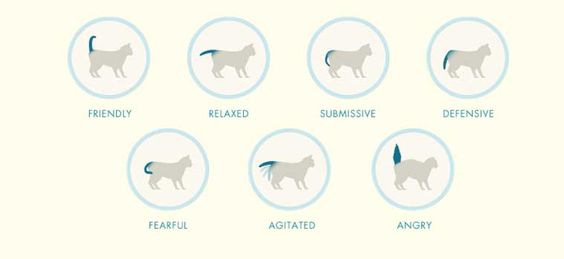
Lesson 1: Cat Tail Origins
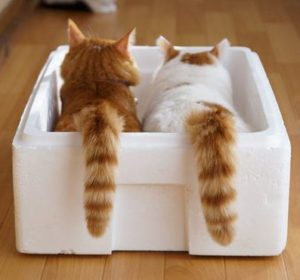 Yes, cat tails are excellent for maintaining balance during their many tightrope walking, cabinet-leaping excursions. But tails also serve another essential purpose: for communication between themselves and other critters.
Yes, cat tails are excellent for maintaining balance during their many tightrope walking, cabinet-leaping excursions. But tails also serve another essential purpose: for communication between themselves and other critters.
Along with cat sounds, body language and tail positions are kitty’s primary means of communicating her needs and moods. Learning to read a cat’s tail is an excellent way to ensure a harmonious cat household.
Lesson 2: Tail Position
High tails
A high tail is, generally, a better sign than a low tail. A cat approaching you with her tail held straight up is in a good mood. She’s happy to see you, and open to interaction. If we examine the evolutionary roots of such behavior, it’s not hard to see why.
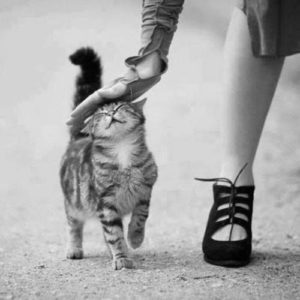 In the wilderness, a cat’s survival would depend largely on its ability to remain undetected, whether on the offense (hunting) or defense (avoiding predators). A subconscious decision to hold one’s tail aloft (and thus highly visible) would likely be an indicator of inquisitiveness, openness, and friendship. Not unlike a human hand held up high in greeting, a raised cat tail is the sign of a relaxed, happy cat.
In the wilderness, a cat’s survival would depend largely on its ability to remain undetected, whether on the offense (hunting) or defense (avoiding predators). A subconscious decision to hold one’s tail aloft (and thus highly visible) would likely be an indicator of inquisitiveness, openness, and friendship. Not unlike a human hand held up high in greeting, a raised cat tail is the sign of a relaxed, happy cat.
A raised cat tail, tip curved slightly forward, is an even better sign. Not only is she feeling relaxed and open, your cat is actively seeking interaction. Her tail tip gives it away—it’s curled towards you in “seeking” gesture. She is glad to see you. She wants to swap stories. She wants to hear about your shitty day.
Aren’t cats grand??
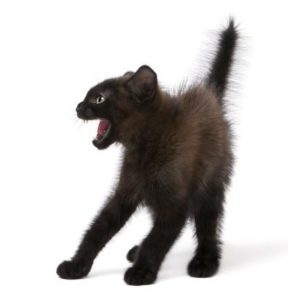 One particularly notable exception to this rule of “high tail = happy, low tail = afraid” is the iconic “Halloween Cat” tail. A kitty tail, shooting straight up as though electrocuted, is a reflexive response to being startled. Her tail will puff up with the fur along her spine, and her legs stiffen. This reflex makes a cat look bigger and more menacing, hopefully frightening off whatever vile gremlin dared take it by surprise.
One particularly notable exception to this rule of “high tail = happy, low tail = afraid” is the iconic “Halloween Cat” tail. A kitty tail, shooting straight up as though electrocuted, is a reflexive response to being startled. Her tail will puff up with the fur along her spine, and her legs stiffen. This reflex makes a cat look bigger and more menacing, hopefully frightening off whatever vile gremlin dared take it by surprise.
In our house, aforementioned gremlin usually takes the form of another cat crouched behind the credenza, bum wiggling mischievously.
Low tails
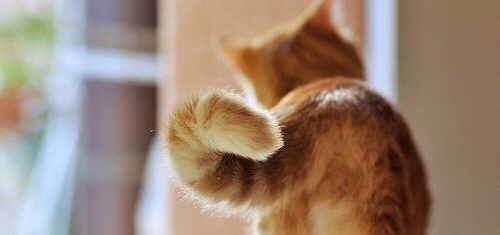
A cat tail held low, or parallel to the floor, doesn’t necessarily indicate the opposite of happiness. Generally, we can consider a horizontal cat tail to be a neutral posture. She is neither open to interaction nor extremely averse to it; she’s in her natural state, which for a cat means a state of passive caution. Attempts to pet or interact with her will likely be fended off or dodged.
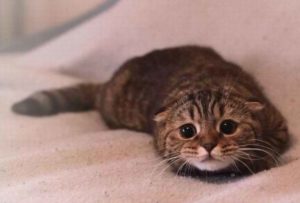 A cat tail carried very low, almost touching the ground, however, is a negative sign. Remember the cat’s evolutionary instincts? A frightened, defensive cat wants to keep her tail tucked away and out of sight. She’s on the move only because she has to be, as she attempts to scurry away from some perceived danger.
A cat tail carried very low, almost touching the ground, however, is a negative sign. Remember the cat’s evolutionary instincts? A frightened, defensive cat wants to keep her tail tucked away and out of sight. She’s on the move only because she has to be, as she attempts to scurry away from some perceived danger.
An extreme manifestation of this state is a posture my husband likes to call “siege mode.” It’s a stance that my cats take when we’ve just moved to a new house. They skulk along the wall, bodies and tails held as low as possible to the ground, legs bent in a perpetual army crawl. Their very lives are under siege. They must stay in high alert and in a constant state of defensive caution if they’re to survive that strange humming noise coming from the fridge.
Curled tails
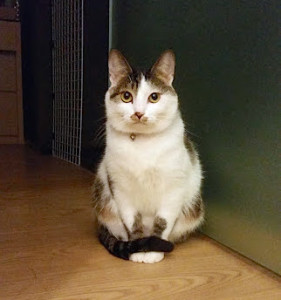
My mom’s cat, Flower, princess of tidily-tucked tails.
A tail tucked neatly around a cat’s body or out of sight indicates a closed-off kitty. She’s in one of those moods, detachedly observing her environment and reluctant to interact with it.
A kitty sitting with a neatly-curled tail most likely doesn’t want to be touched. Approach with kevlar gloves, or treats. Ideally both.
Last but not least is the “inverted U” tail. My cats don’t display this “horseshoe” tail too often, but when they do, they’re usually on the run. A horseshoe tail is a sure sign of defensive aggression—meaning kitty’s feeling extra feisty, whether from being chased against her will or from a particularly enthusiastic bout of the midnight crazies.
A inverted U or “horseshoe” tail in action.
Lesson 3: Tail Movements
Now that we’ve mastered the art of understanding cat tail positions, let’s throw in another variable: movement.
Tail movements are controlled by a cat’s autonomous nervous system, so they’re largely involuntary and thus the perfect visual gauge of kitty’s current mood.
(Check out a hilarious video of Pippin, our resident derpologist, attempting to tame his tail for a good grooming, here.)

Flicking tails
A commonly-seen kitty tail movement is the gentle swish. Cats swish their tails while lounging in the sun, or flick them idly in sleep. A gently waving tail is the sign of a relaxed kitty.
When only the tip flicks back and forth, however, kitty is alert and focused on something. Likely, she’s gazing out the window at some intriguing sight. Or setting up for an inter-cat ambush.

Thrashing tails
Thrashing (or whipping) tail motions indicate irritation and/or excitement. When lying down, a thrashing tail is usually accompanied by a “thumping” sound as kitty’s tail hits the floor. She’s warning you (subconsciously) that your current petting session is getting a little out of hand. Perhaps your hand is straying too close to her sensitive underbelly, or you’ve accidentally handled her feet. It’s always a good idea to pay attention to your kitty’s tail when petting her (particularly when stroking her stomach), to avoid inadvertently activating the whiskered bear-trap of agony.
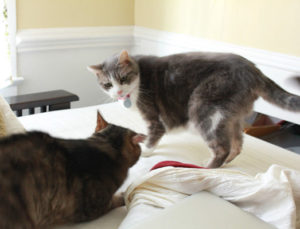 Sometimes, you’ll also see play-fighting cats circle each other, tails thrashing away. A certain level of aggression will usually be present during cat play sessions, so this isn’t something to be overly concerned about.
Sometimes, you’ll also see play-fighting cats circle each other, tails thrashing away. A certain level of aggression will usually be present during cat play sessions, so this isn’t something to be overly concerned about.
When a thrashing tail is accompanied by bristling fur along the spine and pulled-back ears, however, it may be time to intervene (but casually!).
Redirecting your cats’ attention with a wand toy and a soothing voice will suffice.
(When you shout or make a fuss about aggressive cat overtures, you’ll only add to the tension and perpetuate more negative energy.)
Wiggling tails
Tail thrashing, however, shouldn’t be confused with tail wiggling (or vibrating). A rapidly wiggling tail, held straight up, is the sign of a very happy cat. She’s anticipating something awesome, like treats. Or affection. Or she’s just bloomin’ pleased to see you after a long absence.
Caressing tails
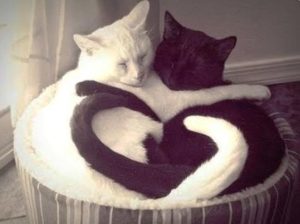 Sounds gross, I know. No, cats don’t caress their own tails. That would be super weird. But they will caress you with their tails. If a cat’s tail brushes up against you or comes to rest on your body, that’s no accident.
Sounds gross, I know. No, cats don’t caress their own tails. That would be super weird. But they will caress you with their tails. If a cat’s tail brushes up against you or comes to rest on your body, that’s no accident.
While a dog may accidentally bump you (or, let’s be honest, beat you mercilessly) with their tails, cats are very cognizant of any bodily contact, and touch you only when they really mean to. A cat tail graze is expressing, ever so subtly, affection and fondness.
There you have it. Glorious songs of ice and fire, penned in the strokes of a cat’s tail.
And that’s all for this lesson, folks! Be sure to tune in for our next class, where we’ll analyze our kitty’s toenail clippings to divine the precise moment of their next bowel movement.
(Really gripping stuff, you won’t want to miss it.)
Forge on! Understand your cat like never before:
6 Subtle Signs That Your Cat Adores You
And finally: Why do cats really purr?

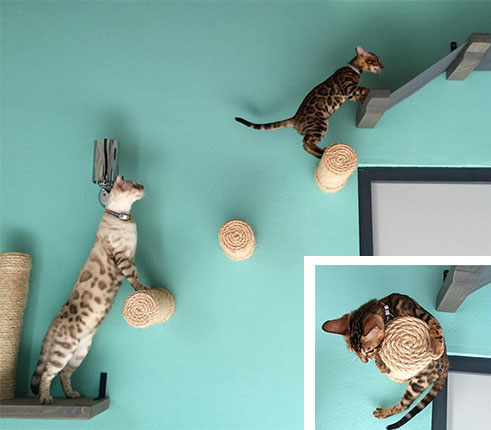
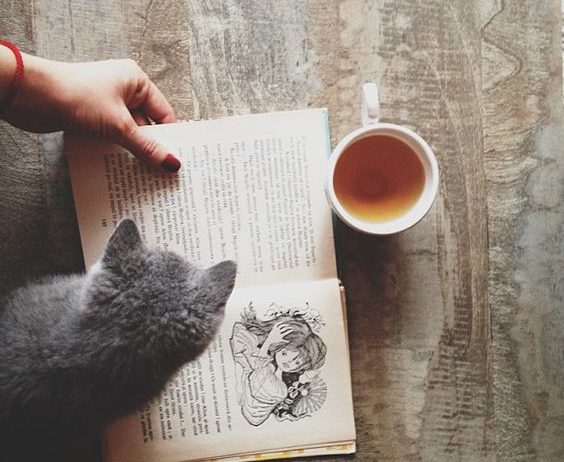
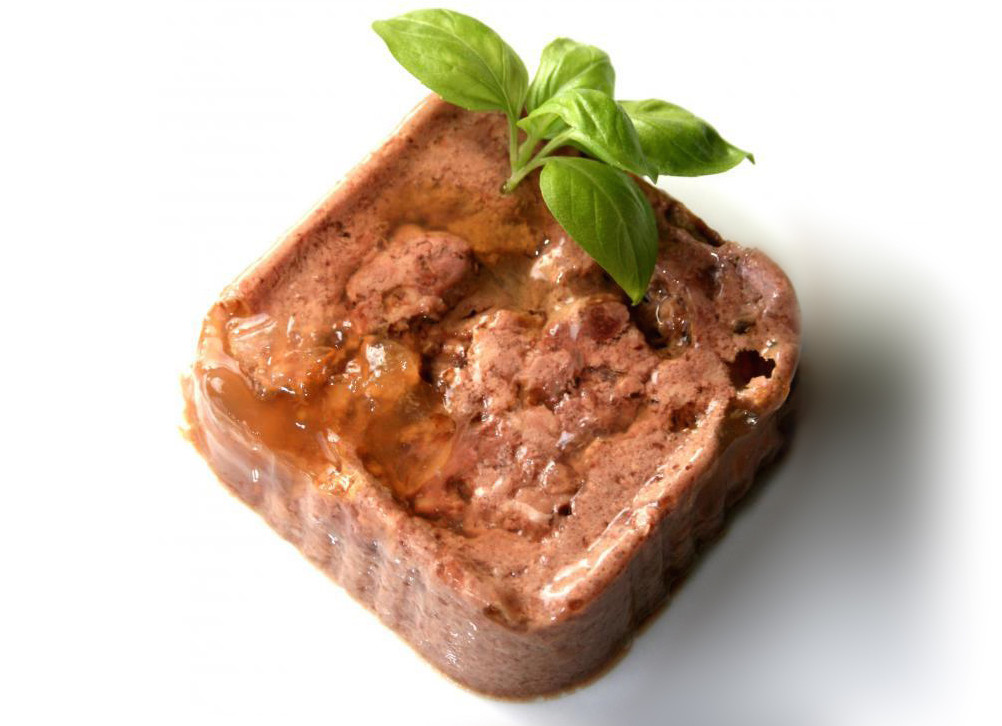
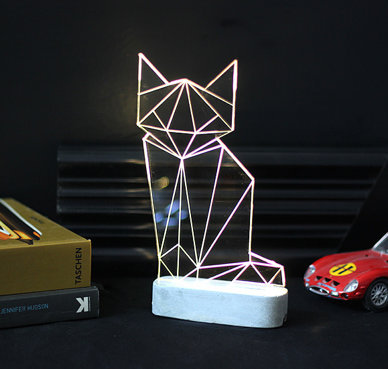
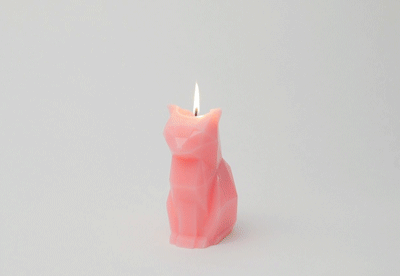
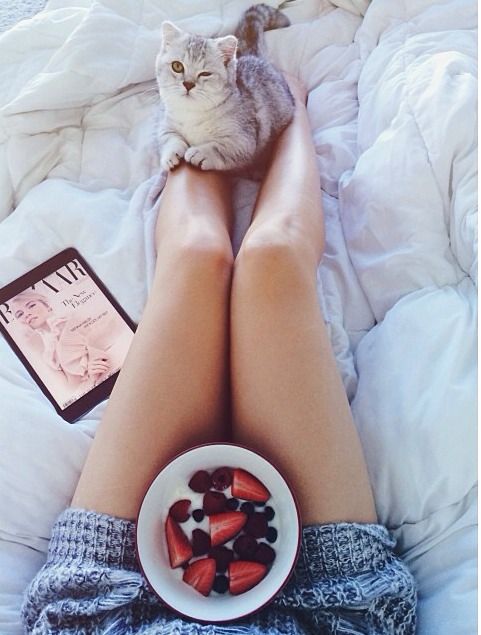
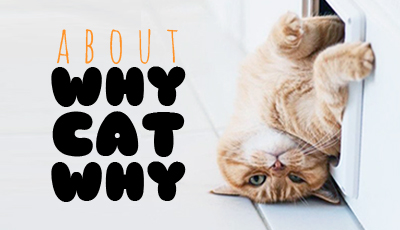
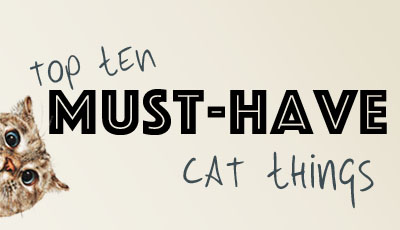
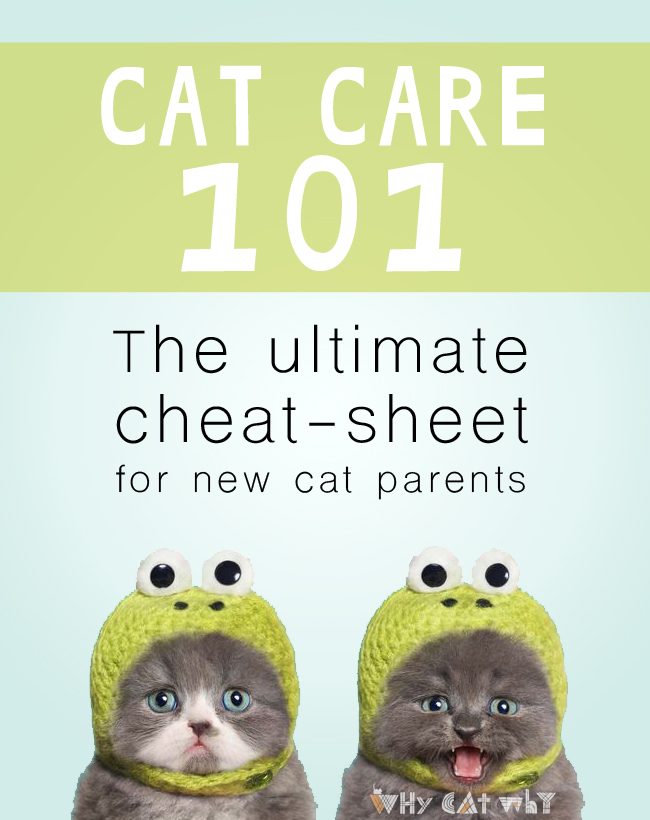
There’s a kind of tail flick I can’t seem to find described anywhere. When my cats seem to be otherwise happy & engaged, with their tails up and proud, I sometimes see them flick the tail forward, just once or twice. (Not the side-to-side flick.) As far as I can tell, this indicates engagement with whatever’s in front of them, but I’m curious what you might think.
Interesting! I can’t say that I’ve seen that flick firsthand, but it definitely sound like your instincts could be right. I notice that my cats tails tend to “point” towards whatever is engaging them at the moment, so a flick forward seems to me like the actions of an intrigued cat.
Sometimes when I come home from work my cat does this with her tail– it’s like a full on scorpion tail shape– one or two big flicks forward and it’s over.
My cat likes to sit on my lap and thump his tail against my leg. The entire time! And he looks me in the eye to make contact and give me love blinks when I stop petting him.
My cat likes to lay on her side and lifts the end of her tail up and down slowly. Does this mean she is happy? Also, this isn’t related to the post but I’m sure you might know the answer: Sometimes my cat meows in a way that I can’t find a video on. It’s a long drawn out sound that changes in pitch, and when I ask her what’s wrong she responds with more meowing like this. It kind of sounds like she’s whining. Do you think this means she is bored and wants me to play? It’s usually accompanied by her coming to smell my foot when I’m at my desk a couple times, then she will go away and start meowing toward me.
I got a cat who seeks me out for cuddles,swats her tail and drops it loudly.She also wags her tail a lot,sorta like a happy dog.I know it is usually a sign they are agry or uneasy,ut my cat actually cuddles me while she does this.Does this mean i annoy her? Then why come to me to get petted?
My Pips is the same! Loves cuddles and will actively seek me out, but if I happen to be cuddling him in a way that’s not totally comfortable for him (for instance, hand resting on belly or bum), his tail whips around of its own accord. He’s still purring and happy to be cuddled, but moving my hand to his upper back or scratching his face (which he loves) usually settles the tail down.
That said, every cat is different and it’s possible yours whips her tail in excitement or anticipation rather than agitation. If she seems otherwise totally comfortable, I wouldn’t worry.
Ok, pussycat running to jump on bed…I would really like to understand the “bi-Polar tail”,(half up and half down) which you call the horse-shoe tail…what does it mean? puuuuleease….I have a black kitten, about 6 months old that has a pretty active life with 2 other brothers, but he will come up to me and half his little bi-polar tail just hanging there. Vet said nothing wrong physically….
If the vet says all seems well and your kitty seems to be behaving normally, I wouldn’t worry about it! Maybe he has a “lazy tail,” or maybe he just came off a rousing game of chase with his brothers and is feeling particularly playful/defensive. Enjoy your active little one!
One of my cats always has a weird tail position. It seems that her neutral tail state is on her back. What I mean by this is that she kind of looks like she has a handle on her back and you could just pick her right up. Her tail isn’t broken; she definitely can swish her tail and all. I am just baffled as to why on her back is her tail’s neutral position.
My cat lies down in the middle of the living room her tail hangs limp on the ground with just the tip pointing up.
What’s this mean?
She’s relaxed but (as always) alert. Movement in just the tips of tails are typically a sign of relaxation/passive alertness. Basically, most cats’ natural state!
Very interesting and amusing. We have two cats, one 6 years and the other 9 months. They do some interesting interaction.